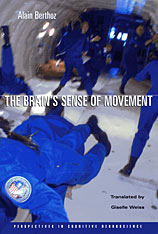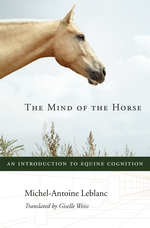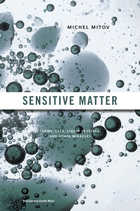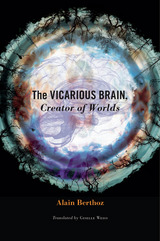
The potential for creating and using biological weapons to wreak havoc is an urgent concern not just in America, but worldwide. In fact, many security experts believe that the next act of widespread terrorism will likely come from a weapon of biochemical means.
In Anthrax: Bioterror as Fact and Fantasy, Philipp Sarasin explores the real threats of biological weapons--in contrast to the idea of biological substances as nebulous agents of terror--by analyzing the famous anthrax scares that occurred in the United States in 2001. Basing his analysis on government documents and media coverage between the events of September 11, 2001, and the beginning of the Iraq War in March 2003, he shows that the anthrax letters became the necessary fantasy-link between the 9/11 attacks and Saddam Hussein's "weapons of mass destruction." While many bioterrorism experts agree that it would be difficult to use anthrax effectively as a weapon in a large-scale attack, the anthrax scares that occurred in the wake of the September 11 terrorist attacks amplified the American public's fear and uncertainty about what might come next. In effect, these incidents infected the American psyche and created an increased sense of vulnerability that shaped the public's understanding of the War on Terror.
Sarasin, in offering a European's view of the U.S. reaction to the anthrax scare, argues that while threats of bioterrorism are real, they are disproportionate to the fantasmal fears and illusions that now permeate American politics and culture. In short, fear of bioterror has contaminated modern American life.

The neuroscientist Alain Berthoz experimented on Russian astronauts in space to answer these questions: How does weightlessness affect motion? How are motion and three-dimensional space perceived? In this erudite and witty book, Berthoz describes how human beings on earth perceive and control bodily movement. Reviewing a wealth of research in neurophysiology and experimental psychology, he argues for a rethinking of the traditional separation between action and perception, and for the division of perception into five senses.
In Berthoz’s view, perception and cognition are inherently predictive, functioning to allow us to anticipate the consequences of current or potential actions. The brain acts like a simulator that is constantly inventing models to project onto the changing world, models that are corrected by steady, minute feedback from the world. We move in the direction we are looking, anticipate the trajectory of a falling ball, recover when we stumble, and continually update our own physical position, all thanks to this sense of movement.
This interpretation of perception and action allows Berthoz, in The Brain’s Sense of Movement, to focus on psychological phenomena largely ignored in standard texts: proprioception and kinaesthesis, the mechanisms that maintain balance and coordinate actions, and basic perceptual and memory processes involved in navigation.

Ornaments and icons, symbols of complexity or evil, aesthetically appealing and endlessly useful in everyday ways, knots are also the object of mathematical theory, used to unravel ideas about the topological nature of space. In recent years knot theory has been brought to bear on the study of equations describing weather systems, mathematical models used in physics, and even, with the realization that DNA sometimes is knotted, molecular biology.
This book, written by a mathematician known for his own work on knot theory, is a clear, concise, and engaging introduction to this complicated subject. A guide to the basic ideas and applications of knot theory, Knots takes us from Lord Kelvin’s early—and mistaken—idea of using the knot to model the atom, almost a century and a half ago, to the central problem confronting knot theorists today: distinguishing among various knots, classifying them, and finding a straightforward and general way of determining whether two knots—treated as mathematical objects—are equal.
Communicating the excitement of recent ferment in the field, as well as the joys and frustrations of his own work, Alexei Sossinsky reveals how analogy, speculation, coincidence, mistakes, hard work, aesthetics, and intuition figure far more than plain logic or magical inspiration in the process of discovery. His spirited, timely, and lavishly illustrated work shows us the pleasure of mathematics for its own sake as well as the surprising usefulness of its connections to real-world problems in the sciences. It will instruct and delight the expert, the amateur, and the curious alike.

Horses were first domesticated about 6,000 years ago on the vast Eurasian steppe extending from Mongolia to the Carpathian Mountains. Yet only in the last two decades have scientists begun to explore the specific mental capacities of these animals. Responding to a surge of interest in fields from ethology to comparative psychology and evolutionary biology, Michel-Antoine Leblanc presents an encyclopedic synthesis of scientific knowledge about equine behavior and cognition. The Mind of the Horse provides experts and enthusiasts alike with an up-to-date understanding of how horses perceive, think about, and adapt to their physical and social worlds.
Much of what we know--or think we know--about "the intelligence of the horse" derives from fragmentary reports and anecdotal evidence. Putting this accumulated wisdom to the test, Leblanc introduces readers to rigorous experimental investigations into how horses make sense of their world under varying conditions. He describes the anatomical and neurophysiological characteristics of the horse's brain, and offers an evolutionary perspective by comparing these features with those of other species. A horseman himself, Leblanc also considers the opinions of renowned riding masters, as well as controversies surrounding the extraordinary powers of the horse's mind that have stirred in equestrian and scientific circles.
Although scientists understand more today about how horses think than at any time in our species' long acquaintance with these animals, much remains in the dark. The Mind of the Horse brings together the current state of equine research and will likely stimulate surprising new discoveries.

Who could have guessed that the lowly fruit fly might hold the key for decoding heredity? Or that the mouse might one day disclose astonishing evolutionary secrets? In a book infused with wisdom, wonder, and a healthy dose of wry skepticism, Nobel Prize-winning geneticist François Jacob walks us through the surprising ways of science, particularly the science of biology, in this century. Of Flies, Mice, and Men is at once a work of history, a social study of the role of scientists in the modern world, and a cautionary tale of the bumbling and brilliance, imagination and luck, that attend scientific discovery. A book about molecules, reproduction, and evolutionary tinkering, it is also about the way biologists work, and how they contemplate beauty and truth, good and evil.
Animated with anecdotes from Greek mythology, literature, episodes from the history of science, and personal experience, Of Flies, Mice, and Men tells the story of how the marvelous discoveries of molecular and developmental biology are transforming our understanding of who we are and where we came from. In particular, Jacob scrutinizes the place of the scientist in society. Alternately cast as the soothsayer Tiresias, the conscienceless inventor Daedalus, or Prometheus, conveyer of dangerous knowledge, the scientist in our day must instead adopt the role of truthteller, Jacob suggests. And the crucial truth that molecular biology teaches is the one he elaborates with great clarity and grace in this book: that all animals are made of the same building blocks, by a combinatorial system that always rearranges the same elements according to new forms.

Life would not exist without sensitive, or soft, matter. All biological structures depend on it, including red blood globules, lung fluid, and membranes. So do industrial emulsions, gels, plastics, liquid crystals, and granular materials. What makes sensitive matter so fascinating is its inherent versatility. Shape-shifting at the slightest provocation, whether a change in composition or environment, it leads a fugitive existence.
Physicist Michel Mitov brings drama to molecular gastronomy (as when two irreconcilable materials are mixed to achieve the miracle of mayonnaise) and offers answers to everyday questions, such as how does paint dry on canvas, why does shampoo foam better when you “repeat,” and what allows for the controlled release of drugs? Along the way we meet a futurist cook, a scientist with a runaway imagination, and a penniless inventor named Goodyear who added sulfur to latex, quite possibly by accident, and created durable rubber.
As Mitov demonstrates, even religious ritual is a lesson in the surprising science of sensitive matter. Thrice yearly, the reliquary of St. Januarius is carried down cobblestone streets from the Cathedral to the Church of St. Clare in Naples. If all goes as hoped—and since 1389 it often has—the dried blood contained in the reliquary’s largest vial liquefies on reaching its destination, and Neapolitans are given a reaffirming symbol of renewal.

Groping around a familiar room in the dark, or learning to read again after a traumatic brain injury; navigating a virtual landscape through an avatar, or envisioning a scene through the eyes of a character—all of these are expressions of one fundamental property of life, Alain Berthoz argues. They are instances of vicariance, when the brain sidesteps an impasse by substituting one process or function for another. In The Vicarious Brain, Creator of Worlds, Berthoz shows that this capacity is the foundation of the human ability to think creatively and function in a complex world.
Vicariance is often associated with proxies and delegates, but it also refers to a biological process in which a healthy organ takes over for a defective counterpart. Berthoz, a neuroscientist, approaches vicariance through neuronal networks, asking how, for example, a blind person can develop a heightened sense of touch. He also describes how our brains model physical reality and how we use these models to understand things that are foreign to us. Forging across disciplinary boundaries, he explores notions of the vicarious in paleontology, ethology, art, literature, and psychology.
Through an absorbing examination of numerous facets of vicariance, Berthoz reveals its impact on an individual’s daily decision making and, more broadly, on the brain’s creation of worlds. As our personal and social lives are transformed by virtual realities, it is more crucial than ever before that we understand vicariance within our increasingly complex environment, and as an aspect of our own multiplying identities.
READERS
Browse our collection.
PUBLISHERS
See BiblioVault's publisher services.
STUDENT SERVICES
Files for college accessibility offices.
UChicago Accessibility Resources
home | accessibility | search | about | contact us
BiblioVault ® 2001 - 2024
The University of Chicago Press









